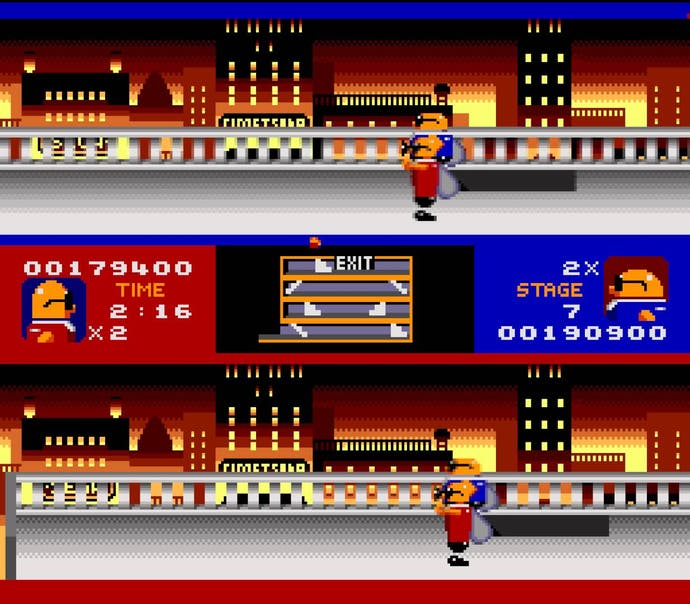The pleasures of a good video game horizon
See those mountains?
There's a wind farm being built just outside of Brighton. It's a huge project and so it seems to be taking forever. And at the same time, it seems to be moving ludicrously fast, a vast ship zipping back and forth across the edge of the sea, leaving silver stilts in its wake - the poles which will soon be topped with massive turbines.
I see this wind farm every day on the bus, a sci-fi city rising on the horizon. And it reminds me how I am used to seeing strange, beautiful, improbable things on the horizon, and how the reason for all of this is video games.
When I think of classic 16-bit games, I often realise that I don't think of what's going on in the foreground, of the rings I collected, the street gangs I fought. Instead, I tend to think about what was going on in the background. Even then, in the early 1990s, it was the backgrounds of games that really spoke to me, and I don't think I'm alone in this. In the days of running left to right, background art probably shifted quite a lot of units.
There was a phrase: "superlative parallax scrolling". Remember that? I must have read that phrase in Mean Machines almost every month, referring to a 16-bit game that worked the genuine 16-bit magic of a horizon that moved at a slightly different speed to the foreground and with layers stages in-between, suggesting a space between the two extremes, a realm for the imagination to race into and fill with possibilities.

The horizon became a thing to be yearned for. I loved the Green Hill Zone in Sonic, but I really loved the horizon in the Green Hill Zone, those mountains and waterfalls made of tottering spars of rock, separated by a glittering South Pacific ocean. I loved the places I used to rob in Bonanza Bros, the casinos and one-percenter apartments. But the places I really wanted to visit were the urban spaces glimpsed out of the windows of these joints, the skyscrapers rising into the clouds, occasional treetops suggesting leafy boulevards.
Even more recently in a game like Canabalt, the horizon is still working its magic. You're running over rooftops and dodging alien obstacles, but the horizon is telling you how bad things are really getting out there: huge, teetering outer-space elephants lurk and plod, the cobbled-together industrial muddle of a spaceship hangs silent in the sky. Invasion! In a game like Canabalt, a game that pretends to exist in the single moment as you leap from rooftop to gantry to billboard to rooftop, the horizon is giving you most of the story, just as in a game like Yoshi's Island, which pretended to look back to the simpler days of papercraft and colouring books, huge chain chomps - I bet this species has a specific name - swooping out of the horizon and diving into the earth around you weren't just a hazard, they were proof of the game's technical prowess. The background muddling with the foreground!
The background muddling with the foreground. There is a word attached to much of this stuff for me, a word that I never actually use in sentences because I don't really know how to deploy it. Velleity: "A wish or inclination not strong enough to lead to action." That's the horizon in games, isn't it? Cor, that looks nice. That looks nice....
My wife and I went out to see the wind farm earlier this year. A local dive ship captain gambled that people might pay a bit of money to get a tour. Out there on the silvery sea, Brighton itself became part of a vast wraparound skybox, while the spindly stalks of the turbine bases were revealed as massive, brightly painted towers, emerging from the water at regular intervals all around. It looked, of course, like a video game, like the vast industrial wasteland of a Rage or a Gears of War. I liked that idea, that the horizon of Sonic, say, once you got close to it, might look like Far Cry. Here's to the horizon! Sometimes, the future really is waiting for you out there.









